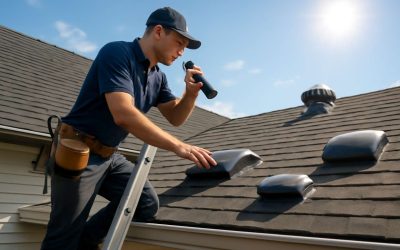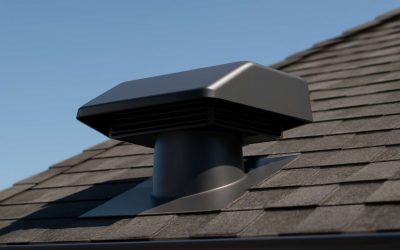
Having roof ventilators in your attic will help you maintain your home’s air quality and keep your heating costs down. Adding roof vents can also add a lot of value to your home.
Ridge vents
Depending on your climate, ridge vents may or may not be the most effective attic ventilation solution. However, a well-designed ridge vent can reduce your energy bill, maintain a cooler attic, and protect your roof shingles. A properly-installed ridge vent can also keep your home free of mold and mildew.
A ridge vent is an opening located at the peak of your roof. This opening is usually made of a metal or plastic material and serves as a vent for warm, moist air. The air flows to the outside, removing moisture and heat from your attic.
Installing a ridge vent system is a relatively simple and inexpensive process. The key is to make sure the ridge is water-tight. If not, water can seep through and cause damage to your home.
Ridge vents come in different styles, with some being more energy efficient than others. A ridge vent is normally used to vent the attic, but they can be used in industrial warehouses as well. They can also be installed in combination with soffit vents to enhance air circulation.
A properly installed ridge vent will not only help your home breathe, but will extend the life of your roofing system. They are most commonly used on shingled residential buildings. They are also useful in vaulted ceilings.
Revolving ventilators
Whether you’re looking for a new ventilation system or you’re just looking for the best way to get the air out of your house, you should consider installing revolving roof ventilators. Revolving ventilators have a lot of advantages, including the fact that they help reduce the temperature in your home. They also have the ability to help prevent mold and mildew from growing inside your home.
Revolving ventilators are not for the faint of heart, though. They’re a little bit noisy when you change direction and you may not have much space for them. They can be tricky to install, and if you’re unsure of what you’re doing, it’s best to have someone do it for you. They’re also a bit of a pain to maintain, and you might need to replace them after a while.
There are two main types of revolving roof ventilators. The first type is a stationary head. This type of roof vent is the most efficient, but it has the highest maintenance costs. A second type is the free spinning variety. These are the ones you’ll find on eBay. This type of roof vent starts revolving as soon as the outside wind hits, and is usually installed along the entire ridge of the roof.
The main reason for installing revolving roof ventilators is to bring in cooler air from the outdoors to replace hot air that comes from your home. This is especially true in the summer, when warm air builds up inside. It’s also important to maintain negative pressure, which can be achieved by installing fans.
Power attic ventilators
Powered attic ventilators for roofs, also known as power vents, are circular shaped vents that require electricity to operate. They work by pulling hot air out of the attic and replacing it with cooler air from the outside. They are also designed to exclude snow and insects.
The issue with power attic ventilators for roofs is that they can use more energy than they save. They force your air conditioning unit to work harder, which will result in higher utility bills. And while they can help you avoid heat damage in the attic, they are not a good solution for most homes.
A better way to get the same results is to install whole house fans. These are especially effective during the fall and spring, when outdoor temperatures cool down. They can also complement your AC unit when it is working to keep your house cool during the summer months.
Another alternative is to invest in passive attic ventilation. This is not a viable solution, as it doesn’t extend the life of your shingles, but it does reduce the amount of moisture in your attic and can prevent condensation. It is also a great way to lower the temperature of your home when you aren’t using your A/C.
Some people use ridge vents to pull out hot air from their attic. These are popular because they aren’t visible from the ground. However, these vents can cause problems when they aren’t equipped with a filter. They can allow insects and debris to enter the attic.



0 Comments